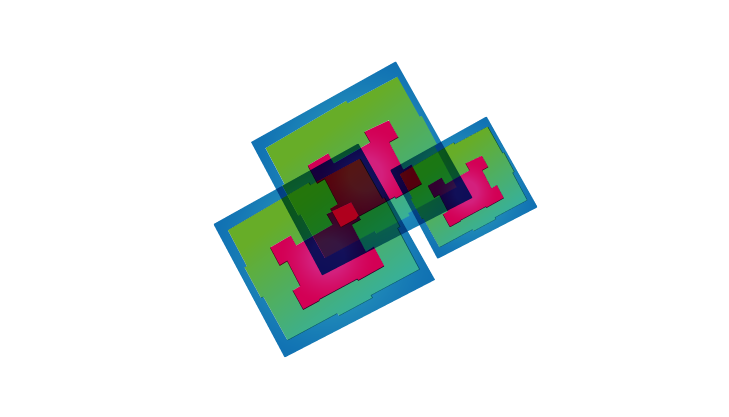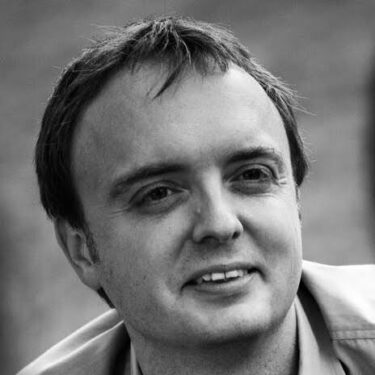MAB20’s academic track includes four Paper Sessions, where the selected full papers and Late-Breaking Works (LBW) will be presented via Zoom. Each session will feature six 5-minute presentations followed by a discussion. This session will be moderated by Andrew Vande Moere, professor in design informatics at the Department of Architecture, KU Leuven. See below the selected papers to be presented in this session:
Situating Media Infrastructure
Yuhan Ji (The Bartlett, University College London), Ava Fatah Gen Schieck (The Bartlett, University College London) and Duncan Wilson (The Bartlett, University College London).
Abstract
Media Architecture scholars have outlined the importance of considering the urban design perspective in informing the deployment of digital media in public space. In this paper, we build on their work and provide a detailed account based on knowledge from urban design coupled with literature from Human-Computer Interaction research. Specifically, we address the role of location – its physical and spatial characteristics, and related human activities – in influencing public interaction with media infrastructure. We aim to provide a framework for understanding the complex relationship between media infrastructure and urban space, and the impact of the deployment of these infrastructures and their locations on the how people interact with them by: 1) developing an initial framework for public space characteristics based on urban design knowledge, 2) conducting detailed observations and analysis of 3 selected sites for a case study of InLinkUK network, London. We discuss the initial outcome of the case study analysis, and report on the next stages of this research Contribution: This paper addresses the question: how media architecture can contribute to a sense a place and provides a detailed account based on a case study in London. It attempts to broaden and extend existing calls by media architecture scholars to consider urban design knowledge in informing the deployment of digital media infrastructure in public space.
Plant(e)tecture: Towards a Multispecies Media Architecture Framework for Amplifying Plant Agencies
Hira Sheikh (Queensland University of Technology (QUT)), Kavita Gonsalves (Queensland University of Technology (QUT)) and Marcus Foth (Queensland University of Technology (QUT)).
Abstract
More-than-human geographies are gaining increased attention as a response to the planet’s environmental emergency and in turn allowing us to envision an alternate future to tech-utopian smart cities. New types of digital technologies have emerged into the human mindscape, and with that has emerged a new potential for bridging human understanding and multispecies geographies, with an emphasis on plants as agents in this paper. This paper attempts to answer the following research questions: how can twenty-first-century media technologies, such as media architecture, be used to incorporate the plant/flora perspective? This paper begins by providing a review of multispecies ontology, exploration of plant agentivity and how media architecture can visualise and amplify plant agency based on Whitehead’s Process Philosophy, Mark Hansen’s Feed-Forward concept and Feedburger’s technical agency framework. The three examples of Hortum Machina B, terra0 and Elowan are explored as beta versions of Plant(e)tecture which are analysed for agency and autonomy when multispecies actors are coupled with technologies. The paper ends with a discussion on each of the case studies towards a dissection of the role of media architecture towards supporting plant agency constructed beyond human sensibilities, the autonomy of multispecies actors in autonomous decision-making and to be identified. The paper closes on the potentiality of the multispecies-techno agency framework to enable human designers, makers, decision-makers and thinkers to move beyond human-centric determinism prevalent in media architecture and provides them with new ways of thinking of the purpose of technical agency in multispecies assemblages.
More-Than-Human Future Cities: From the Design of Nature to Designing for and Through Nature
Serena Pollastri (ImaginationLancaster Lancaster University), Rupert Griffiths (ImaginationLancaster, Lancaster University), Nick Dunn (ImaginationLancaster, Lancaster University), Paul Cureton (ImaginationLancaster, Lancaster University), Christopher Boyko (ImaginationLancaster, Lancaster University), Adam Blaney (ImaginationLancaster, Lancaster University) and Elisabeth De Bezenac (ImaginationLancaster, Lancaster University).
Abstract
This paper examines ways in which media architecture and information design can contribute to multispecies wellbeing and coexistence in urban and peri-urban environments. It argues that a radical shift is needed, from looking at design as a tool to plan tamed nature into urban fabric towards design actions for understanding and working with the unruliness of the natural world in its manifold forms. We present a review of existing literature and an analysis of a selection of projects-in-progress from the CUBIC research group at Lancaster University, UK. In doing so, we aim to propose a new approach for how we think of, and design for, more-than-human future cities. Media architecture is core to this endeavour because we need to find new ways to communicate these new knowledges and contribute toward a better understanding of the complex issues of multispecies coexistence and flourishing. Far from providing an established framework or guidelines, we share this provocation from the outset as a catalyst for emerging collaboration and through which further open-ended questions can be explored.
The Business Case for Media Architecture: Modeling Project Benefits to Justify Investment
Niels Wouters (The University of Melbourne), Franz Wohlgezogen (The University of Melbourne) and Kim Halskov (Aarhus University).
Abstract
A growing portfolio of global media architecture projects and sustained research interest in the domain suggest that the discipline is here to stay. With practical knowledge becoming easily accessible to clients, architects and urban planners, we notice a shift from traditional advertising screens to integrated context-aware installations. The challenge now becomes to understand investment return of media architecture in order to ensure ongoing support by clients and funders. In this paper we study The Digital Bricks, a 208 megapixel media façade integrated within a university building. We describe the project vision, engagement strategy and design outcome, and analyse in detail the business case for the project. We share considerations to support development of business cases for media architecture projects that favour engagement, cultural and innovation capacity over financial returns. As the discipline matures, our insights will help in the endeavour to convince clients to invest in media architecture that inspires and engages audiences.
Embedding an Interactive Art Installation into a Building for Enhancing Citizenís Awareness on Urban Environmental Conditions
Penny Papageorgopoulou (National and Kapodistrian University of Athens), Dimitris Delinikolas (National and Kapodistrian University of Athens), Natalia Arsenopoulou (National and Kapodistrian University of Athens), Louiza Katsarou (National and Kapodistrian University of Athens), Charalampos Rizopoulos (National and Kapodistrian University of Athens), Antonios Psaltis (National and Kapodistrian University of Athens), Iouliani Theona (National Technical University of Athens), Alexandros Drymonitis (Royal Birmingham Conservatoire, Birmingham City University), Antonios Korosidis (University of Macedonia) and Dimitrios Charitos (National and Kapodistrian University of Athens).
Abstract
The paper presents an artwork, embedded in a public-use building complex, comprising four interactive, sight specific installations. The artwork employs ubiquitous computing technologies and a variety of other components (projector, LED matrix displays, physical and custom-made objects) to sense, collect and translate urban, environmental data and human input into evolving multisensory representations, affording hybrid spatial experiences. The artwork aims at highlighting the impact of human activity upon the environment and the nonhuman entities that inhabit it, shifting the focus to a post-anthropocentric view of the world.
Designing for Place-making in XR: The Process of the Co-Drive Stops and its Atlas
Laura Boffi (IDAUP- University of Ferrara)
Abstract
The study described in this paper shows how the concept of the social construction of space can support the design of the XR experience called “Co-Drive” by injecting acts of place-making along the design process. Co-Drive is a novel service that allows social virtual travelling by car between a driver of an automated vehicle and a remote passenger connected via virtual reality from home. In this paper, the focus is on the Co-Drive stops, the peculiar spaces where the driver and the remote passenger get to meet for the very first time, and how such spaces turn into places which are bounded by their physical features; the individual and social experiences; and the narratives drawn from those experiences.

